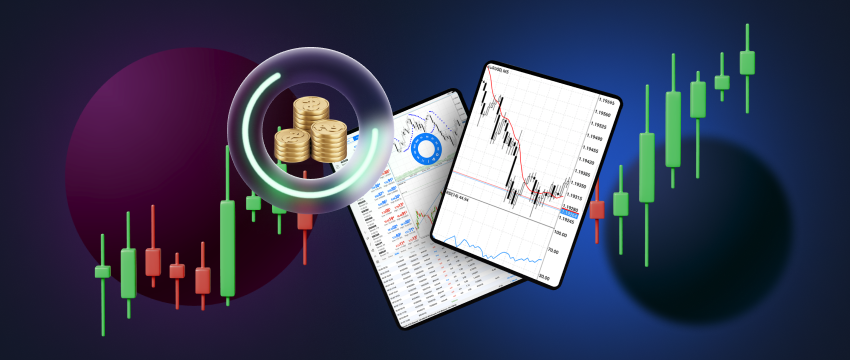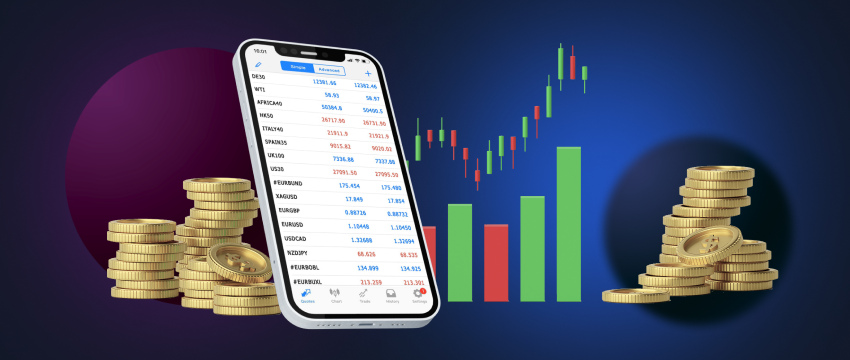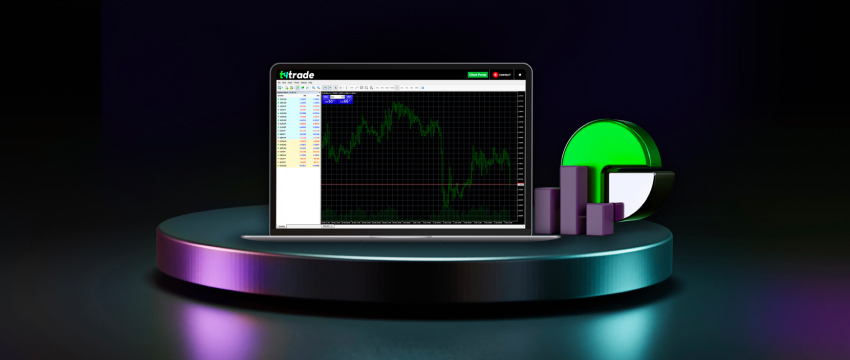Fundamental analysis examines the price movement of assets. It does this by studying related economic, financial, and geopolitical factors that impact the price. Traders use fundamental analysis to evaluate the intrinsic or fair market value of an instrument and compare it to its current price before coming to a trading decision. In the case of forex trading, this would be on currency pairs.
Key components of fundamental analysis
A fundamental analyst considers several key factors that may impact the value of an asset, sometimes over several months or even years. They will scour this data in combination with other critical insights (e.g., wider economy) to identify trading opportunities. Let’s dive into what these factors are.
1. Economic indicators
Economic indicators offer forex traders a critical understanding of the overall health and performance of a country’s economy. Key categories of economic indicators include:
Employment
Employment rates are some of the most important indicators of the health of an economy. In the U.S. for instance, the U.S. Bureau of Labour releases 2 closely followed reports on the first Friday of each month. The unemployment rate report monitors how many people are out of work. The nonfarm payroll report tracks how many jobs have been added or eliminated in the economy overall. These reports are the reason for some of the biggest one-day movements in both the stock and bond markets.

Inflation
Price stability is an important goal of monetary policy pursued by central banks in countries worldwide. It is measured as the rate of change in inflation. Therefore, keeping inflation within a target range considered conducive to sustainable economic growth and stability of prices is vital. Indicators of inflation include the Consumer Price Index (CPI), Producer Price Index (PPI), and oil prices.
Consumer activity
The spending patterns of consumers are important to track. Factors like increasing unemployment rates may result in a drop in consumer confidence. In turn, spending may drop which may see corporate profits decline as well. In the U.S., the Consumer Confidence Index (CCI), is considered a leading indicator. Released on the last Tuesday of each month, the CCI indicates people’s perception of their economic prospects and how inclined they are to spend money. This includes retail spending and spending on real estate (the housing market).
Investor activity
Understanding investor sentiment is essential to identify whether a market is bullish or bearish, and to make trading decisions accordingly.

2. Central Bank policies
Central banks are largely responsible for shaping a country’s monetary policies, interest rates, and currency valuation. By monitoring central bank announcements, e.g., interest rate decisions or policy statements, a trader or investor is better able to speculate on the direction of a currency. Decisions made by the central banks have a significant impact on the outcome of fundamental analysis.
Here are some of the ways how:
Monetary policy
Monetary policy tools like interest rates, reserve requirements and open market operations, can influence money supply and cost of borrowing. As a result, a change in monetary policy can impact the economy significantly by way of inflation, GDP growth and investment/trading opportunities.
Macroeconomic indicators
Central banks often release key economic indicators and data, like GDP growth rates, inflation numbers, employment reports, and consumer spending. These indicators offer valuable insights into the overall health of the economy and help fundamental analysts measure the possible impact on specific companies or industries.
Forward guidance
Forward guidance refers to information given by a central bank about its future direction of monetary policy, based on its assessment of the outlook of price stability. This information is communicated through official statements, speeches, and press conferences. Fundamental analysts will use forward guidance when evaluating different trading decisions.

Currency markets
Central banks play an important role in managing their respective currencies. An intervention by a central bank in a currency market can impact exchange rates. This will in turn affect the competitiveness and earnings of companies involved in international trade. Fundamental analysts must consider these currency dynamics when analysing corporations or industries with considerable export/import exposure.
3. Geopolitical events
Geopolitical events, civil or cross-border instabilities, and war can influence currency values considerably and cause volatility in the forex markets. Fundamental analysts will look at these events in the context of elections, trade disputes, governmental or central bank policy changes, etc, to determine how these events may impact currency pairs.
4. Market sentiment
Studying market sentiment involves assessing the market’s mood in its entirety, as well as investor sentiment regarding an economy or a currency. This includes investor confidence, market expectations and tolerance for risk – all of which can influence currency fluctuations. Traders can measure market sentiment using sentiment indicators, surveys, news sentiment analysis, etc.
What traders use fundamental analysis?
Every trading style uses some form of technical or fundamental analysis or a combination of both. Swing traders who typically rely on technical analysis may consider fundamental analysis when the need arises. Position traders often combine technical and fundamental analysis to identify a trend and an investment that will make gains from that trend.
Event traders that focus on geopolitical or economic events will use fundamental analysis to establish how these events may impact currency markets. Traders using economic calendars, a key fundamental analysis tool, will monitor key economic data like central bank announcements, employment reports, GDP rates, etc.
Risk management in trading
A good understanding of risk management is crucial to ensure optimal trading outcomes. Predefined risk management rules will help a trader make better decisions in terms of what types of trades to open or close, and the level of risk they’re willing to incur to avoid losing all their capital. Fundamental analysis plays a role in this process.
Opening a demo trading account
Opening a demo trading account with a trusted CFD broker offers a great way to practice using fundamental analysis. Simulating a live trading environment, a demo account enables traders to execute real-time trades and to experiment with different trading strategies to see potential outcomes, using virtual money. The demo account usually provides real-time market data and expert insights, as well as the resources required to learn about various market conditions and trading concepts.
Disclaimer: This material is for general informational & educational purposes only and should not be considered investment advice or an investment recommendation. T4Trade is not responsible for any data provided by third parties referenced or hyperlinked, in this communication.




